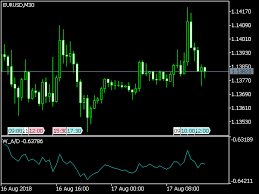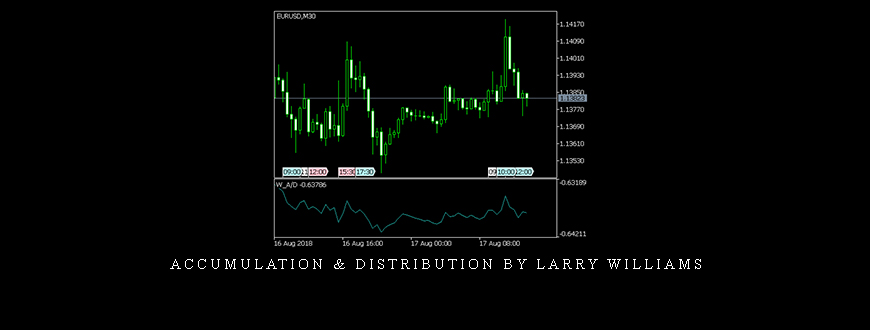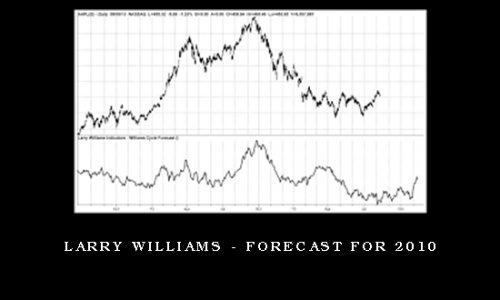
Accumulation & Distribution by Larry Williams
The Williams’ accumulation/distribution (WAD) indicator is a momentum oscillator that measures buying and selling pressures. Accumulation refers to a rising market, with increased buying pressure meaning the buyer is in control. Conversely, distribution is associate with declining markets and selling pressure with the sellers in control. This indicator is one of many developed by technical analyst, Larry Williams. Unlike many of the other accumulation/distribution indicators, such as on-balance volume and the Chaikin oscillator, the WAD doesn’t factor in volume. If you do want to include volume data when using this indicator, some software packages have a volume-weighted WAD.Calculating the Williams’
accumulation/distribution value begins with determining the true range high (TRH) and true range low (TRL):TRH = Yesterday’s close or today’s high, whichever is greater TRL = Yesterday’s close or today’s low, whichever is greaterThen, determine the WAD value for today:If today’s closing price is greater than yesterday’s closing price, Today’s WAD = Today’s close – TRL Otherwise, if today’s closing price is less than yesterday’s closing price, Today’s WAD = Today’s close – TRH Otherwise, if today’s closing price is equal to yesterday’s closing price, Today’s WAD = 0The final cumulative value can then be calculated for the WAD:WAD = Today’s WAD + Yesterday’s WAD
Also Get Accumulation & Distribution by Larry Williams on Traderknow.com
Buy and sell signals will occur when there is divergence between price data and the WAD indicator. For example, if a security’s price is setting a new high and the WAD indicator is not setting a new high, then a sell signal will be generated. If a security’s price is setting a new low and the WAD indicator does not correspond with its own low, then a buy signal is generate.
Figure 1: Daily price chart for Wal-Mart Stores, Inc. plotted with the Williams accumulation/distribution indicator.
Graphic provided by: TradeStation.
Once a buy or sell signal is create with the WAD line, it is a good idea to wait for a confirmation of that signal. One fairly easy method for doing this would be to draw a trendline on the WAD. Once this trendline is broken, the signal will be confirm and you can enter a market position with greater confidence.
In the daily price chart for Wal-Mart Stores, Inc. [WMT], a sell signal is created at the arrow labeled 1. At this point, the price has reached a new high, while the WAD line has not. Since the upward trend (line AB) has just been broken to the downside, this would signify an excellent point for exiting a long position or entering a short position. The opposite situation develops at the arrow labeled 2. Here, the price chart has made a new low but the WAD line has not. This divergence signals a buy opportunity. When the WAD line breaks above the downward trendline (line CD) the buy position is confirm.
Also Get Accumulation & Distribution by Larry Williams on Traderknow.com
Visit more course: FOREX TRADING COURSE
The same course: Bill Williams Eduard Altmann SMB Simpler Trading Van Tharp Atlas Api Training Trading Template Sunil Mangwani Sunil Mangwani Frank Paul . Also Market Delta Tradingacademy Simplertrading Urbanforex. Also Candlechartscom Dan Sheridan Pipsociety Atlas Api Training TopTradeTools Todd Mitchell Jerry Singh OpenTrader Alexandertrading Daytradingzones . wyckoffanalytics Simplertrading
Available at traderknow.com
Please contact email: [email protected] If you have any question.
Course Features
- Lectures 0
- Quizzes 0
- Duration 50 hours
- Skill level All levels
- Language English
- Students 88
- Assessments Yes







